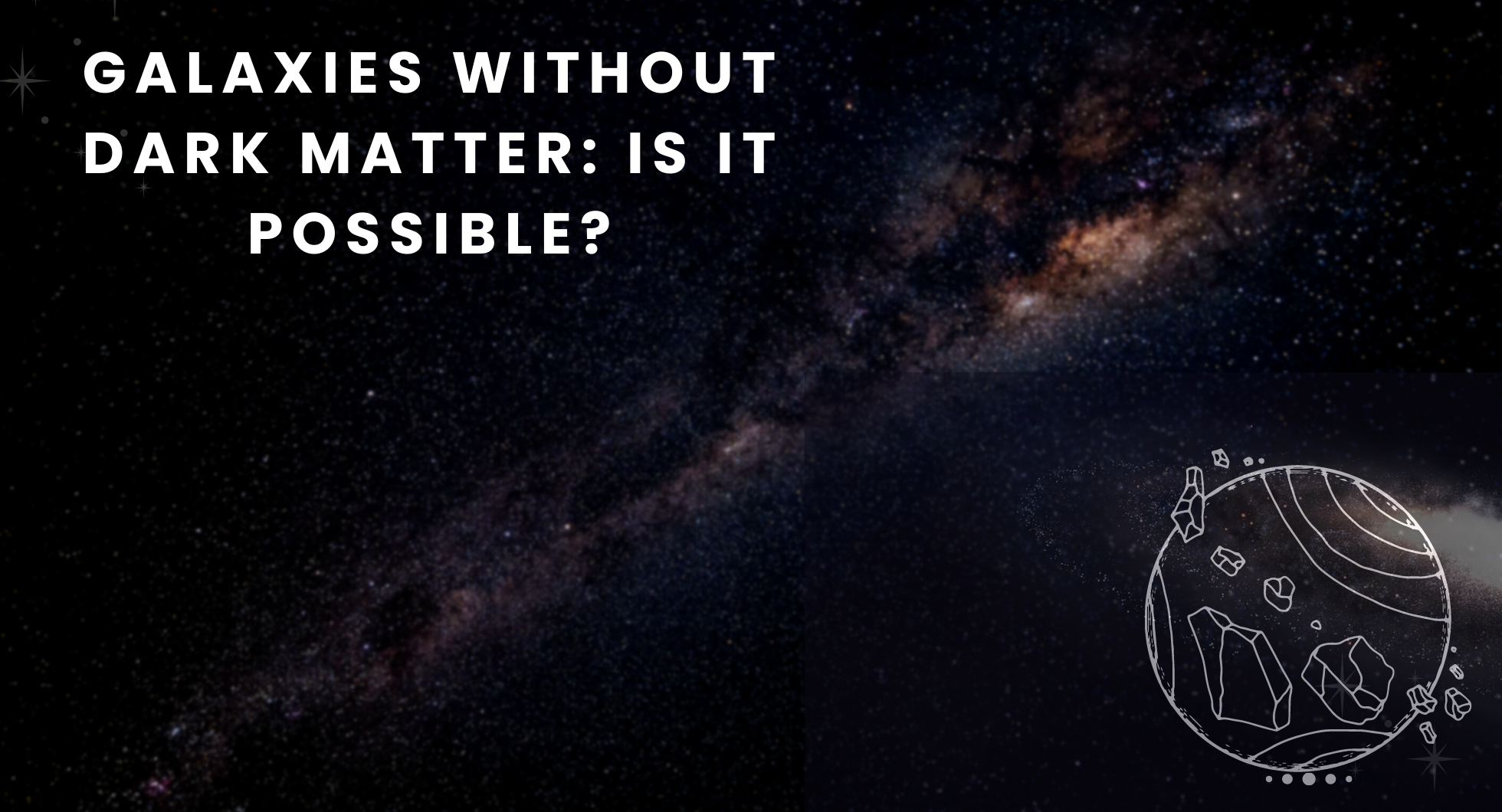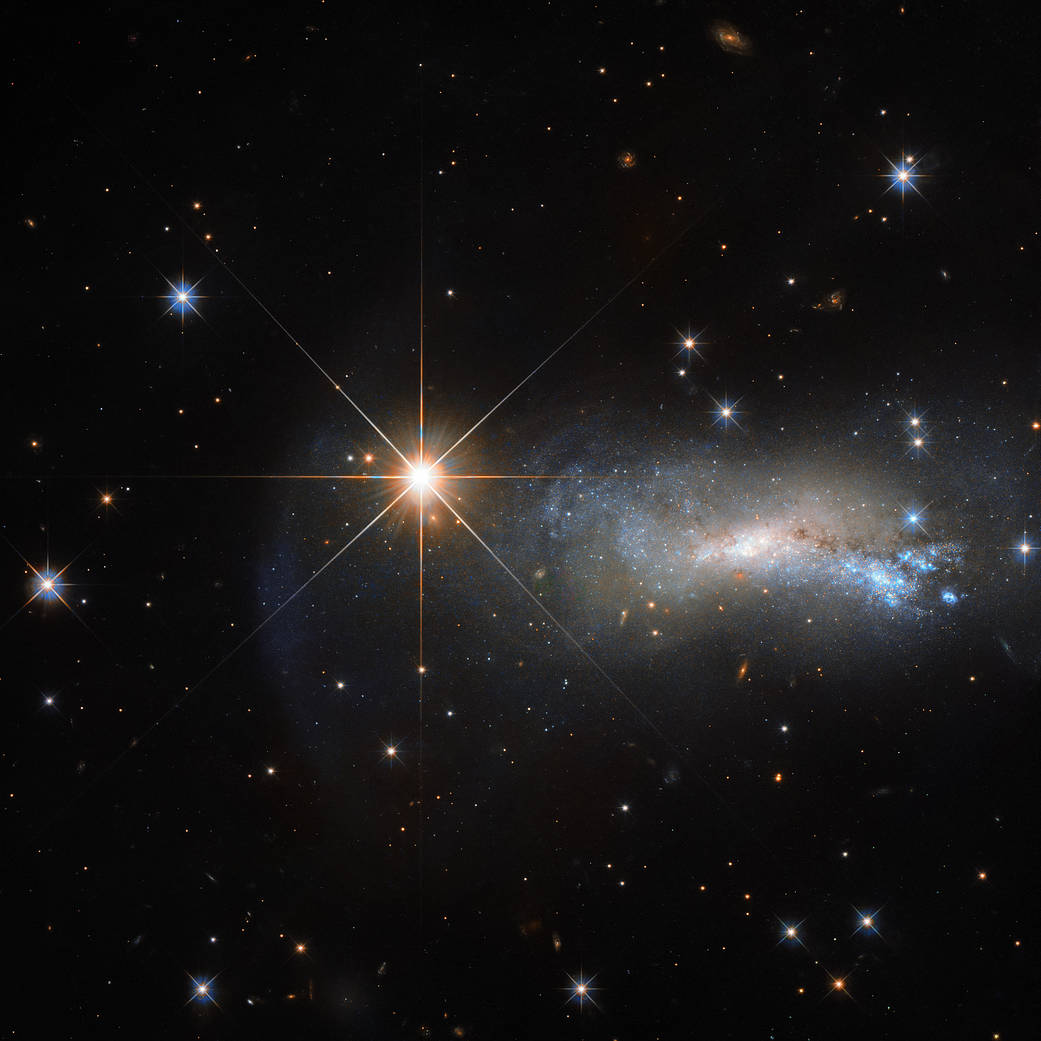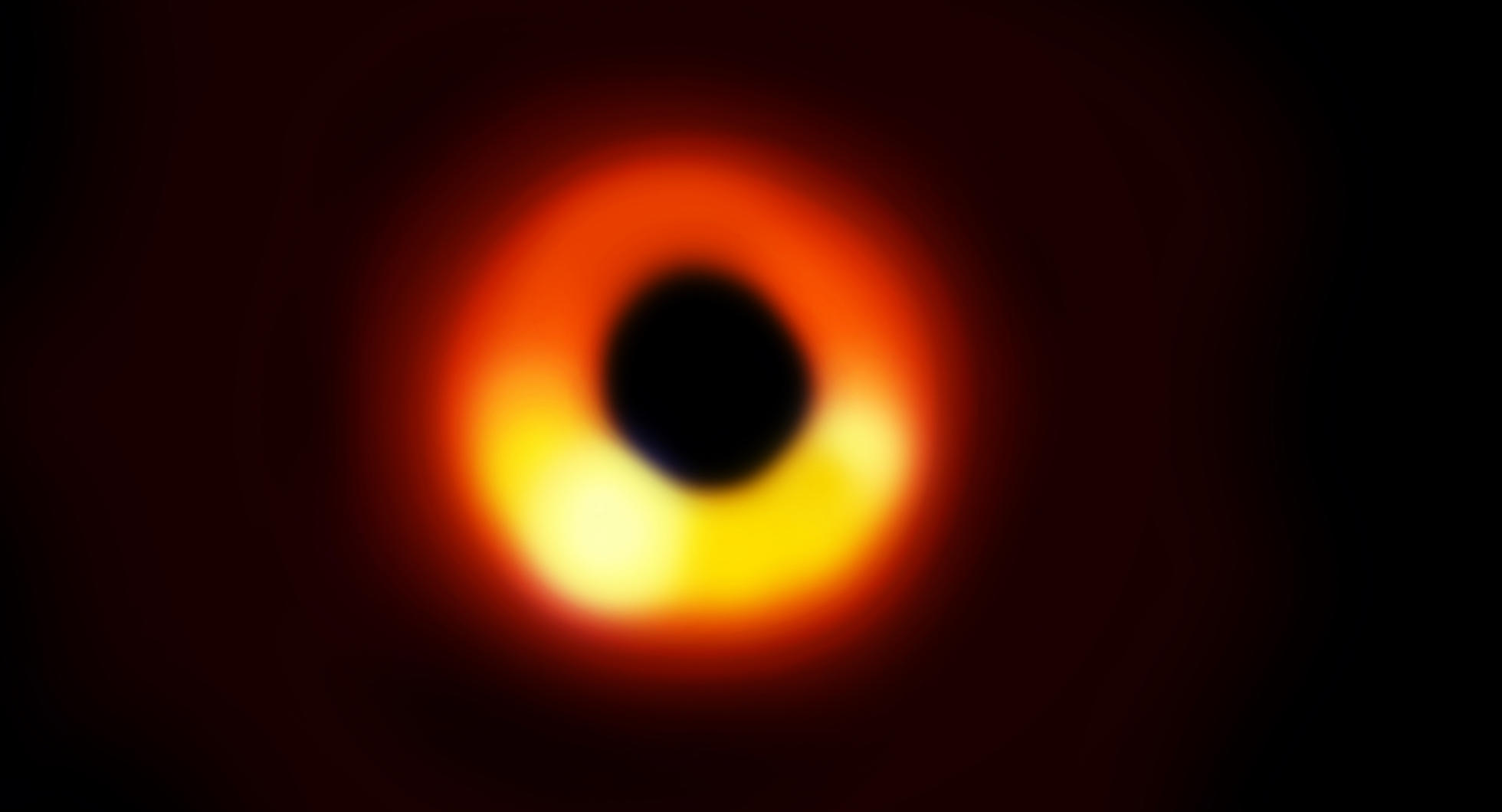NASA’s Chandra identifies an underachieving black hole: let’s explore origin, features and enigma of these most terrifying objects in depth
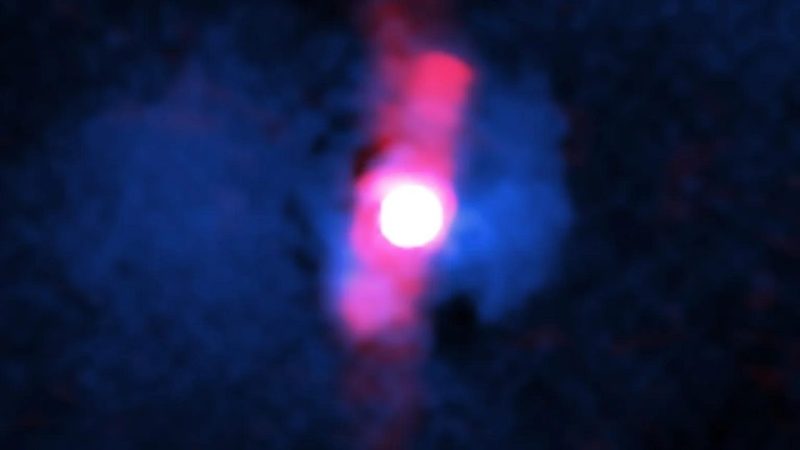
Black holes are too mysterious entities lurking in the depths of space. Many of us cannot even imagine their size, mass and density. The first black hole known was Cygnus X-1, identified by several researchers independently in 1971. Since then, black holes have been fascinating astronomers and scientists with their unparcelled complexity. Telescopes have contributed to our ability to discover their existence; otherwise, we would have never had any idea about such massive objects. Recently, NASA’s Chandra X-ray Observatory made another amazing discovery by identifying an underperforming black hole. In this article, we will attempt an in-depth analysis into the origins, features, and enigma of black holes.
Chandra’s underperforming quasar, known as H1821+643, has added a new dimension to our understanding. Unlike the typical black holes that devour everything within their gravitational pull, this one appears to be more restrained. The underperformance could be attributed to a variety of factors, including its mass, spin, or the surrounding environment. It’s also possible that the black hole is in a state of dormancy, a phase that some black holes go through where they consume less matter.
H1821+643 sits roughly 3.4 billion light-years away from us. Quasars are like the rockstars of black holes, supermassive ones at that. They’re notorious for pulling stuff in at an insane rate, blasting out intense radiation and sometimes even powerful jets. Among a bunch of galaxies, H1821+643 stands out as the closest quasar to us.
Is H1821+643 a quasar?
Well! Quasars are a bit different from other supermassive black holes found in galaxy clusters. They’re like the black holes on steroids, gobbling up material like there’s no tomorrow. Scientists have noticed that regular black holes, growing at a more chilled pace, have a say in their neighborhood by keeping the surrounding hot gas from cooling down too much, affecting how stars form nearby.
But here’s the twist: even though quasars are super active, the study focusing on H1821+643 has suggested that they might not be as big of a deal in steering the fate of their host galaxies and clusters as some people thought.
To come to this conclusion, the team used Chandra to study the hot gas surrounding both H1821+643 and its host galaxy. However, the strong X-rays from the quasar made it hard to see the weaker X-rays from the hot gas. The researchers carefully filtered out the X-ray glare to reveal how the black hole is affecting its surroundings. They did this by creating a new image showing X-rays from the hot gas around the quasar’s cluster. This helped them see that the quasar isn’t really affecting its surroundings much.
Using Chandra, the team also discovered that the gas near the black hole in the center of the galaxy is denser and cooler than gas farther away. Scientists expect this behavior when there’s not much energy input (usually from black hole outbursts) to stop the hot gas from cooling and moving toward the center of the cluster.
Origin of a black hole
A black hole’s origin represents one of the most extreme conditions that exist in our universe. When a massive star, at least 8 to 10 times the mass of our sun, runs out of fuel, it explodes in a supernova, shedding its outer layers and collapsing its core under its own gravity. This collapse creates a singularity, an infinitely dense point with zero volume, hidden behind the event horizon – a boundary where nothing, not even light, can escape.
In the universe, there are objects like white dwarfs and neutron stars where gravity balances quantum forces. Black holes take this to the extreme, where gravity overwhelms all other forces, creating a mass so dense that even light can’t escape.
The first theoretical prediction of black holes came from Karl Schwarzschild’s solution to Einstein’s equations in 1915. However, it wasn’t until 1971 that the first black hole, Cygnus X-1, was identified.
Key features of a black hole
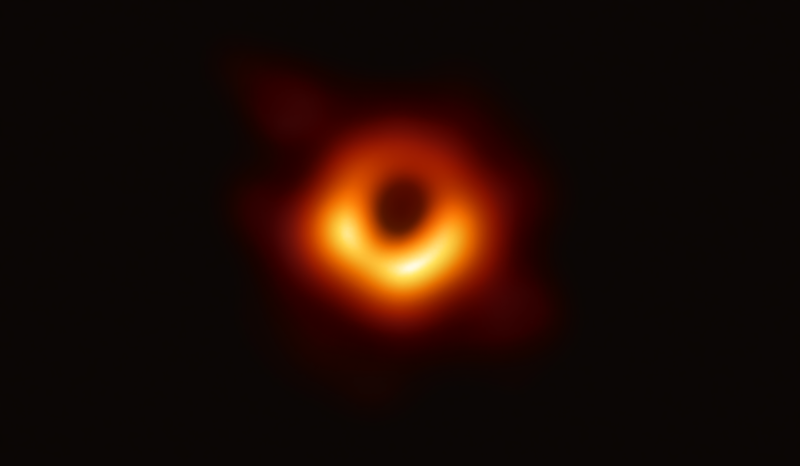
Black holes have three primary components: the outer and inner event horizon, and the singularity. The event horizon signifies the point where anything, including light, is unable to escape the gravitational force of the black hole. The event horizon isn’t a solid surface but more like an invisible sphere encircling the black hole. It’s divided into two parts: the outer event horizon, which we can see from outside the black hole, and the inner event horizon.
At the core of a black hole lies the singularity, a point of infinite density. Although black holes are invisible, astronomers can identify them by observing the radiation emitted when matter falls into them. And the normal rules of physics don’t apply there.
Even though we can’t see black holes directly, we can detect them by how they affect things around them. When matter gets sucked into a black hole, it gives off radiation that we can observe. This was proven by the Event Horizon Telescope in 2019 when it captured the first-ever image of a black hole. The picture showed a bright ring formed by light bending around the black hole.
Number of black holes in the universe
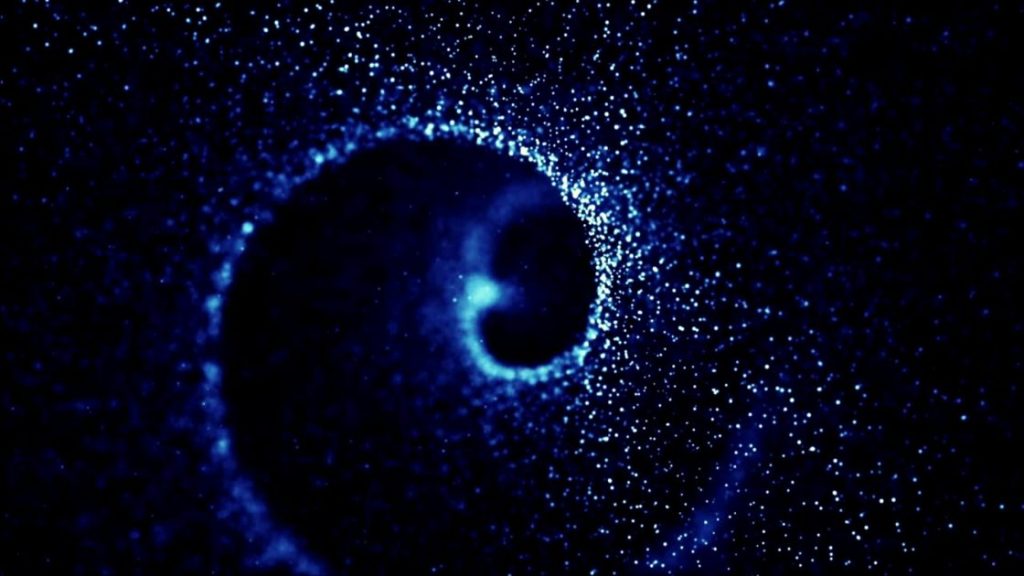
Estimating the total number of black holes in the universe is a super-tough task because they’re pretty hard to spot. But recent studies hint that just in our Milky Way, there might be over 100 million of them.
These black holes come in different sizes. On one end, there are what we call stellar-mass black holes. As discussed above, they form when really big stars run out of fuel and go boom in a supernova explosion. What’s left behind is a dense core called a stellar mass black hole. These can be anywhere from a few times heavier than our Sun to about a hundred times heavier.
Then there are supermassive black holes, which are millions or even billions of times heavier than our Sun. Sagittarius A* is one example, chilling at the center of our Milky Way. It’s about 4.3 million times heavier than the Sun and mostly just sits there, occasionally snacking on gas or dust.
And there’s a cool discovery: Data from European Space Agency’s (ESA) Gaia mission confirmed a black hole candidate V723 Monocerotis, nicknamed “The Unicorn,” just 1,500 light-years away from us. What’s special about it is its tiny size – only about three times heavier than the Sun. That puts it in a weird spot, somewhere between the heaviest neutron stars and the lightest black holes we knew about before. This discovery shows just how diverse and widespread black holes are out there in the universe.
Phoenix-A is the biggest supermassive black hole we’ve discovered so far, containing nearly 100 billion times the mass of our Sun. Ton-618 comes next at 66 billion solar masses, followed by S5 0014+81 estimated to be around 40 billion solar masses.
How, and why black holes are so dense?
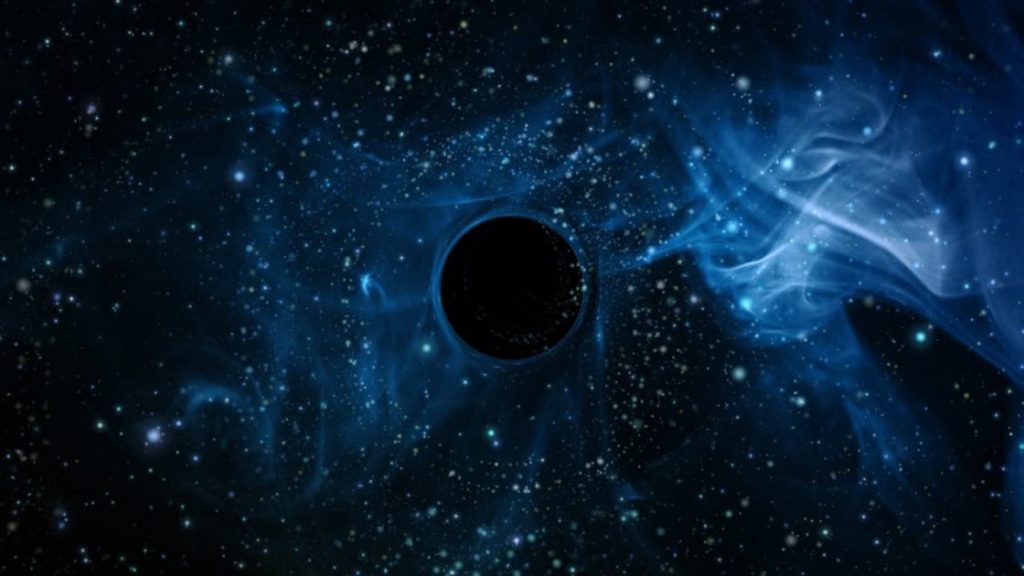
Black holes are always baffling astrophysicists with their incredible density. Their density results from a process called gravitational collapse, where massive objects implode, squeezing matter into a tiny space.
This collapse is a key process in how structures form in the universe. Initially spread out matter can condense over time to create denser regions like stars or black holes. As matter compresses during collapse, it heats up until nuclear fusion ignites at the core of a star.
The event horizon, which marks a black hole’s boundary, is vital for understanding their extreme density. Inside this boundary, gravity is so strong that it dominates all other forces, preventing anything, even light, from escaping.
Theoretical frameworks such as general relativity and quantum mechanics provide insights into the conditions within black holes. General relativity, proposed by Albert Einstein, suggests that a compact mass can warp spacetime enough to create a black hole. It also implies that nothing can move faster than light, meaning once something crosses the event horizon, it can’t escape.
Quantum mechanics offers a different view. It suggests that even empty space is filled with fluctuating quantum fields, producing pairs of virtual particles. Near a black hole’s event horizon, these pairs can split, with one particle falling in while the other radiates away, creating Hawking radiation.
Named after physicist Stephen Hawking, Hawking radiation theorizes that black holes emit thermal radiation due to quantum effects. This implies that black holes have temperatures inversely related to their mass, meaning smaller black holes should be hotter. Over time, this radiation can reduce a black hole’s mass and energy, leading to its slow evaporation.
Contribution of telescopes in finding black holes
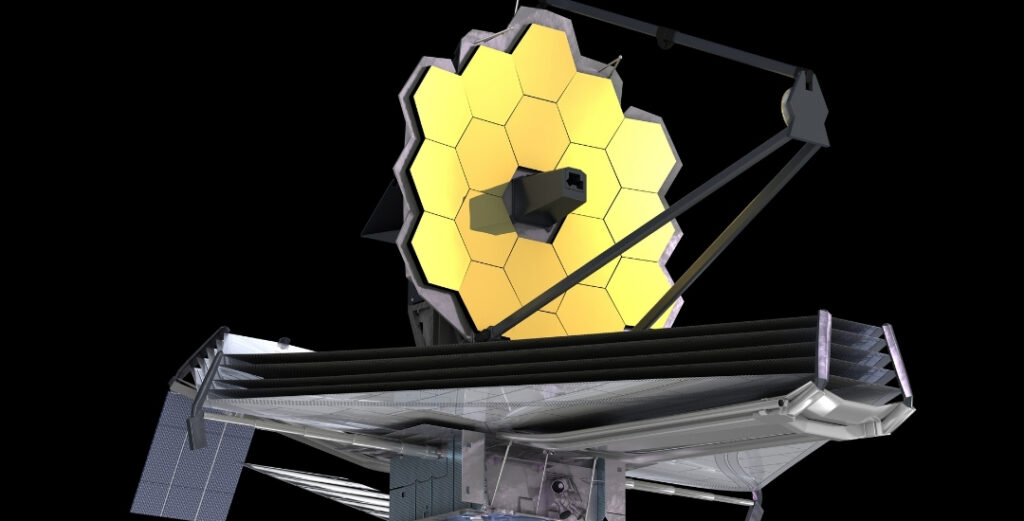
Telescopes such as NASA’s Hubble Space Telescope, Chandra X-ray Observatory, and the James Webb Space Telescope have contributed to unveiling new insights through their diligent observations and data collection.
The Chandra X-ray Observatory is specially designed to spot X-ray emissions from incredibly hot areas in the Universe, such as those surrounding black holes. The X-rays it detects hint at the presence of high-energy particles and strong gravitational fields, often associated with black holes. This observatory has made significant progress in black hole research by detecting X-rays emitted from the hot gas encircling black holes and their behavior. This underperforming quasar H1821+643O is one of Chandra’s remarkable discoveries.
The Hubble Telescope, operating for more than three decades, has provided unprecedentedly detailed images of galaxies. Hubble’s images have been instrumental in enabling astronomers throughout history to conduct realistic analyses of the universe. In its long history, the telescope has pinpointed many potential black holes based on their gravitational effects on surrounding matter. Back in 1990, soon after its launch, the Hubble Space Telescope captured an image of a jet stretching 30,000 light-years long from a galaxy famous for emitting a lot of radio waves. Due to Hubble’s observations, astronomers got the information required to figure out that these jets originate from tiny areas in the centers of galaxies and are probably fueled by supermassive black holes.
The JWST, the latest and most advanced telescope to date, has already made a number of groundbreaking discoveries about galaxies. In November 2023, it unveiled several key findings that revolutionized our comprehension of the universe. The $10b telescope then observed a huge group of galaxies called MACS J0138.0-2155. From this, astronomers found something fascinating: because of something called gravitational lensing, which Albert Einstein talked about a long time ago, a faraway galaxy called MRG-M0138 looks bent or twisted because of the strong gravity from the galaxy cluster in between. The 10B instrument gazed into the depths of the universe, exploring into the farthest reaches of existence, including GN-z11, located approximately 13.8 billion light-years away.
Can we ever visit any of existing black holes?
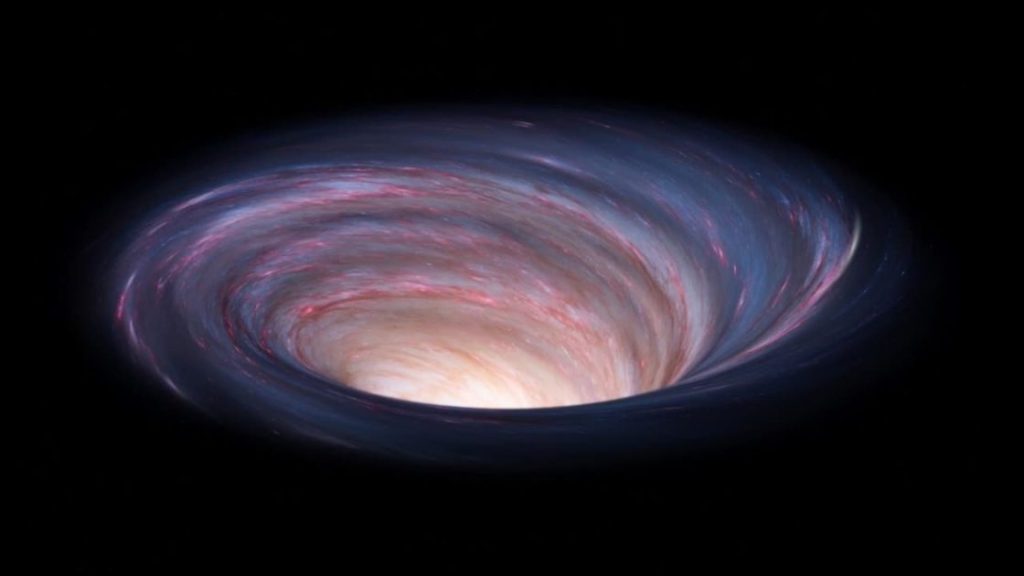
The idea of visiting a black hole may pique interest, but the reality is much more complex and currently beyond our technological capabilities. Black holes possess immense gravitational forces that even trap light, creating a significant barrier to direct exploration.
Theoretical concepts such as wormholes provide speculative avenues for travelling vast distances in spacetime. Derived from Einstein’s General Theory of Relativity, these hypothetical constructs suggest shortcuts across cosmic expanses. However, wormholes remain purely theoretical and have yet to be observed directly. Furthermore, even if they exist, they are expected to be highly unstable and prone to collapse upon encountering matter.
Practical challenges also present formidable obstacles. The nearest known black hole, Gaia BH1, is located about 1,560 light-years away from Earth in the direction of the constellation Ophiuchus. Additionally, the intense gravitational forces near a black hole subject any approaching object to extreme tidal forces, humorously dubbed “spaghettification,” and significant time dilation, rendering any attempt perilous.
Theoretical complexities further complicate the prospect of exploration. The singularity at a black hole’s core, where gravity becomes infinitely strong, remains a puzzle. Furthermore, Stephen Hawking’s theory of Hawking radiation suggests that black holes gradually lose mass and energy over time.
Presently, our study of black holes is limited to observation and theoretical analysis. Instruments like the Chandra X-ray Observatory and the Event Horizon Telescope provide valuable insights into black hole behavior by studying their gravitational effects on surrounding matter. Concurrently, theoretical research enhances our understanding of black hole properties and the mechanisms governing their formation.
Auto Amazon Links: No products found.
